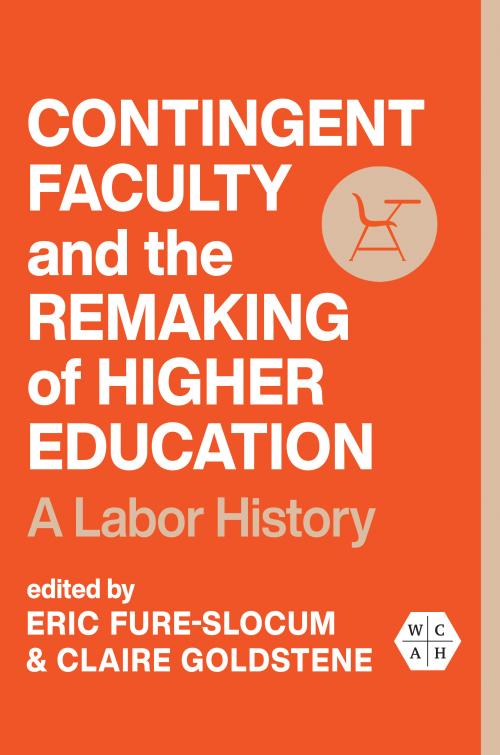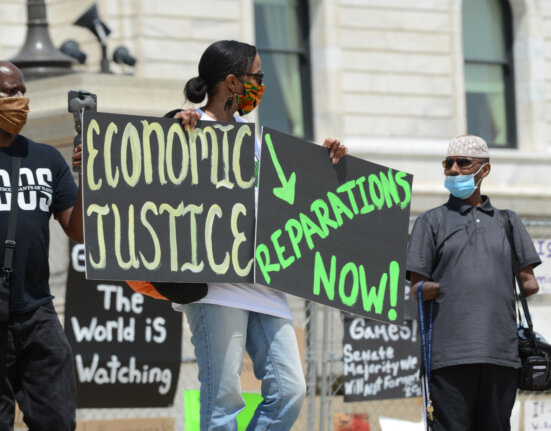This is the first of a series of blog posts that introduces the important themes and issues highlighted in the new edited collection Contingent Faculty and the Remaking of Higher Education.
Casualization is the word that we in the UK use to refer to the expansion of contingent academic labor at universities. It is not, as it is not in the US, a process confined to academia alone. Its ripples spread throughout wider education, through the service industries, through wide sectors of the economy where employers feel they can dispense with old protections and standards. But education, and especially higher education, is one of the areas where casualization has reached its apogee. In the not so distant past, the body responsible for collecting labor statistics for higher education in the UK labelled any contract other than permanent full- or part-time as “atypical.” Now what was once atypical has become typical, as many aspiring academics, especially in the humanities or social sciences, can attest.
Casualization structured my academic career. From a seminar tutor paid by the hour for time in class, and some preparation and marking time, I graduated to a series of nine-month contracts on a salary similar to a junior lecturer (assistant professor). The difference in earnings and working conditions between these two poles of contingent labor was extreme, but both rested on the knowledge that at a certain point, not far in the future, the contract would end and other work would have to be found. I thought in my naivete that so long as I stayed at a certain institution and proved my worth as a teacher and researcher that permanent work would follow. The COVID-19 pandemic dashed those hopes, and I along with so many others was not rehired in a labor market with even fewer vacancies and a higher-than-normal number of applicants. I have transitioned, at least for now, to teaching in secondary education where budgets are tight but casualization, thankfully, is not (yet) as prevalent or entrenched as it is at universities.

My chapter in the recently published book with University of Illinois Press, Contingent Faculty and the Remaking of Higher Education, concerns the broad evolution of contingent academic labor in the UK since at least the 1980s, and especially since the 1990s, when the further expansion of student numbers (along with the introduction of tuition fees) took place alongside the restructuring of the academic labor market. There has always been some element of casual (i.e., non-permanent) work at British institutions, and not all of it is harmful: the teaching experience gained by PhD students as a seminar tutor can often lead to that first academic post.
But here, and especially in the 2000s, quantity began to turn into quality. Between 1999 and 2016 the academic labor force more than doubled, from 131,136 to 270,000, and its composition also altered. The proportion of permanent full-time staff fell in that time from 85% to less than half, and the number of atypical staff rose from zero to 75,000. That zero is obviously an underestimate, given that some academics have always worked, as PhD students or afterwards, on temporary contracts. The trend, however, still indicates a certain direction of travel away from permanent full- or part-time work as typical, even assumed, and towards an employment model built on the widespread use of contingent labor.
This is all context for what I want to emphasize here. That is the resistance that those suffering from casualization have mounted to the process that robs them of job security and all that flows from it. It is not the case, as it more frequently now is on American campuses, that contingent faculty are in fact the best organized academic staff. In the UK, that position goes to their permanently-employed colleagues, many of whom enjoy membership in the University and College Union, the world’s largest tertiary education union. The UCU claims jurisdiction over contingent academic staff as well, indeed of many administrators as well so long as they work above a certain pay grade. (Staff at other grades, from some administrators through to cleaners, caterers and so on, are enrolled in other unions active on campus.)
Since 2018, and in sporadic actions before then, the UCU has initiated sustained strike action across UK higher education. The proximate cause for the first strikes in 2018 was pensions. Employers insisted on a revaluation to the Universities Superannuation Scheme (USS), to which about half of UK universities, including most of the prestigious institutions, were enrolled, and proposed that it transition from a defined-benefits scheme to a defined-contribution one. For younger academics that would mean a drastic reduction in the amount they could expect to receive from the USS in retirement.
But the strikes very quickly brought wider resentments bubbling up to the surface, not least the long decline in real pay for academic labor and the expansion of contingent labor. As the strikes went on into 2019, the UCU added “four fights” – on headline pay, the gender and racial pay gaps, workload, and casualization – to its list of demands. This represented a recognition that in many cases the most loyal attendees on picket lines across the UK worked on contracts where the prospect of a decent pension came some way down the list of immediate priorities. It also reflected years of work by activists within the union who agitated for some time to have the UCU take seriously the challenges and problems faced by academics on contingent contracts.

My chapter in the book is in large part the story of those steps, and that belated recognition by a union largely composed of permanent full-time academic staff that their own conditions, and their collective strength as an organization, relied on the involvement of contingent staff and the elimination or mitigation of casualization itself. It is a story of small steps and false starts, as is always likely to be the case when we are talking about a group of people whose very conditions of employment lead to high turnover. Contingent staff leave that condition either because they have managed to achieve that permanent post or because they abandon attempts to get it. Few people remain in that condition long enough to form the basis for some kind of permanent organization, and so the task of organizing alone must be repeated again and again with new personnel.
In the UK, unlike the US, the UCU does at least provide a permanent home where that shifting population of contingent faculty can create structures that can last and be inherited by the next wave of newcomers. This is not an advantage to be discounted. Attempts at some form of organization outside the UCU have always folded, because the people responsible for them in the first instance have grown discouraged or moved on, with nobody there to replace them. But there is still a limit here on what can be done, because that same turnover prevents contingent faculty from asserting their full strength within the union and insisting that the permanently-employed members of the union place the issue of casualization further up the scale of the union’s priorities.
That is not even really a criticism of the UCU, just a recognition of the balance of forces within the union, and the limitations that these place on successful action. Nor are those limitations the key obstacle facing any future campaign against casualization. That obstacle is instead the dire state of UK universities today. Student numbers in many departments at many places have stagnated. Universities rely to an ever-larger degree on overseas students, whose numbers are being hit by government crackdowns on migration and are in any case not infinite. Their bosses have in many cases done themselves no favors by engaging in unsustainable building sprees and other overexpansion and then digging themselves out of the ensuing financial hole through redundancies and other retrenchment.

These are not problems that can be solved through industrial action alone. They require political solutions, especially as UK universities still receive a great deal of research and teaching funding from the central government. These will take time. Though a Labour government will almost certainly replace the current Conservative one, a Keir Starmer premiership will probably not enact such solutions at any point in the near future. He and Labour have signed up in advance to draconian fiscal rules that make any large new infusion of cash to higher education unlikely, at least in the next five-year parliament. Nobody should pin their hopes for some immediate reversal of fortunes on the vagaries of the ballot box.
Casualization looks set to continue. But this is not a counsel of despair. Such a deep-rooted structural change in the academic labor market was never going to disappear in one glorious strike, or even with one or two well-judged legislative reforms. This is a story decades in duration, and will require all the means available – political and industrial ones in particular – to come to a happy ending. The point of my chapter, the point of the last decade or two of agitation within and without the UCU, is that contingent academic faculty have come some way towards making that happy ending a priority for themselves and for other academics. They have made it a key issue in national strikes and in some cases forced universities to come to local agreements that recognize casualization as a problem. That is not itself a solution to the problem, but a necessary precondition for it.
We in the UK can learn a lot from the struggles of contingent academic faculty in the US, but our American colleagues can also learn from what has – and what has not – been achieved by their counterparts here. The British and American contexts are in some respects strikingly different. There is no American equivalent to the UCU, but by the same token there are no vibrant British organizations to rival the new union branches of contingent faculty on many American campuses. Both can learn from and support the other, even if they will do so from a distance. That is something that books like Contingent Faculty and the Remaking of Higher Education can encourage, and that activists on both sides of the Atlantic can build on. The limitations on what we can do should not lead us to think that we cannot do anything, and by speaking and writing about the problem and then acting on it we still have the power to change it.






